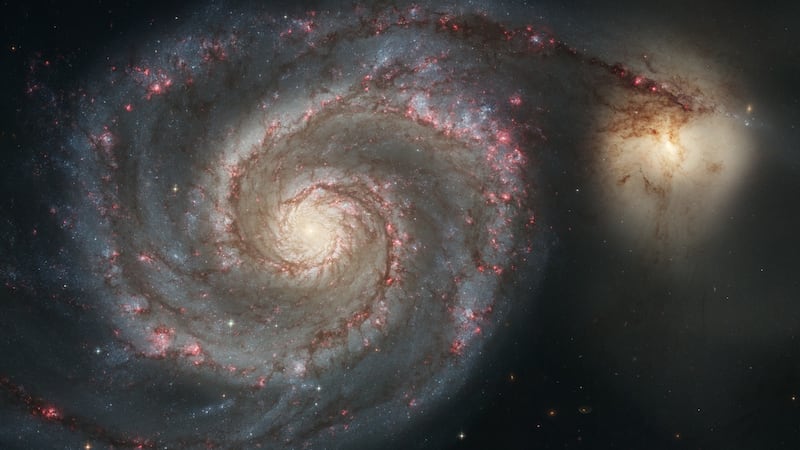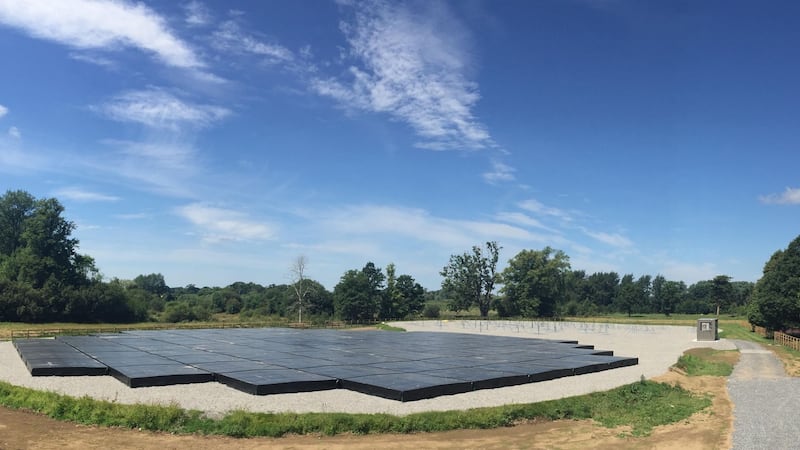Walking through the grounds of Birr Castle en route to Ireland's newest and largest telescope, ILofar, is an unusual experience. After passing through the visitor's reception, the garden pathways lead past the 172 year old giant Leviathan telescope, and eventually to the bizarre site that is I-Lofar itself: an array of antennae covering some hundreds of square metres, which in no way resembles a telescope in the traditional sense.
The Irish Low Frequency Array Radio Telescope (I-Lofar) opened in July and now allows Irish astronomers to explore a range of astronomical phenomena from solar physics to planets outside our solar system. The telescope, which was featured on the RTÉ documentary 13 Billion Miles from Birr, aired in October (still available on the RTÉ Player), is part of the largest low frequency telescope in the world – Lofar.
"Stretching across Europe from Poland to Ireland, and Sweden to France, Lofar is nearly 2,000km wide," says Prof Peter Gallagher at the school of physics, Trinity College Dublin (TCD), who is head of the I-Lofar consortium.


“This means it can be used to take very detailed pictures of the sky, and can study things like exoplanets, look at the early universe, or study solar flares and stellar explosions. It really opens up world class astronomical research for Ireland.”
The Irish component of the project, I-Lofar, was supported with an award of €1.4 million from Science Foundation Ireland, and consists of 55km of cables and 3,000 individual antennae, giving it its unusual appearance.
Radio astronomy
Lofar is a radio telescope, meaning it is used to observe the universe at low frequencies between 10 and 240 Mhz. These frequencies are lower than those detected by traditional optical telescopes – which collect light – and are therefore undetectable by the human eye.
"Each Lofar station is made up of an array of antennae which work together to act as a single telescope the size of Europe," says PhD student Aoife Ryan, at TCD, who has been involved in the construction of Ilofar, and is now using the telescope to conduct her research.
“I-Lofar itself has two different types of antennae designed to receive signals either side of the FM radio band,” she says.
In the book Eyes on the Sky – A Spectrum of Telescopes, author Francis Graham-Smith refers to Lofar as the "software telescope", because its capabilites can only be achieved through recent advances in computational power and software development.
Ryan explains that "the signals received by the antennae are sent via optical fibre cables to Groningen, in the Netherlands, where they are processed by a large supercomputer before being made available to the scientific community".
Solar physics
A lot of the research conducted at I-Lofar is based around solar physics, which is the focus of Prof Gallagher’s research group at TCD.
“Using radio frequencies allows for the probing of the outer layers of the Sun’s atmosphere – the upper chromosphere and corona,” says Ryan. “Radio observations can also be used to better understand the emission mechanisms and plasma conditions associated with solar eruptions called coronal mass ejections.”
I-Lofar’s antennae are controlled by digital electronics which allow the telescope to point towards the Sun without being moved like a conventional telescope. Moreover, a major benefit of using a radio telescope to observe the Sun in Ireland is that radio astronomy can be operated in a range of weather conditions.
According to Gallagher, “in September there was a huge amount of solar activity – some of the biggest flares in the past 40 years - which were being monitored by I-Lofar.”
“We are already beginning to write papers on these,” he says, “which will aim to tell us about the fundamental physics of how the Sun works.”
Gallagher explains that now that the telescope has been turned on and is generating huge amounts of raw data, there will be more PhD students and postdocs hired to conduct the science.
As for the future, one thing he would like to do is to set up a research centre around astronomy and space time in Birr, and attract more funding to the area.
Panel: The Leviathan telescope
By joining the Leviathan telescope on the grounds of Birr Castle, I-Lofar continues the legacy of exploration and discovery in Offaly. For a mind-blowing 72 years, between 1845 and 1917, the Leviathan was the largest telescope in the world – in terms of aperture size – and is considered a national treasure.
The Leviathan was originally built in 1845 by the anglo-Irish astronomer William Parsons, the 3rd Earl of Rosse. The telescope measured 6 feet in length, almost doubling the size of his previous telescope, and was considered a scientific and architectural wonder at the time.
In the years following its construction Parsons used the telescope to observe structures like nebulae and galaxies which had not been seen in such detail before. He made drawings of these objects, the most famous of which is the Whirlpool Galaxy, known officially as M51. Some of these drawings are on display at the visitor centre at Birr Castle.
TCD’s Prof Peter Gallagher hopes that funding may be granted soon to bring the Leviathan telescope back to life, with the objective that it could be used to image some of these astronomical objects again. Wouldn’t that be something?
l Conor Purcell writes on science and nature and has a PhD in Earth Science. He can be found on twitter @ConorPPurcell – some of his other articles at cppurcell.tumblr.com














